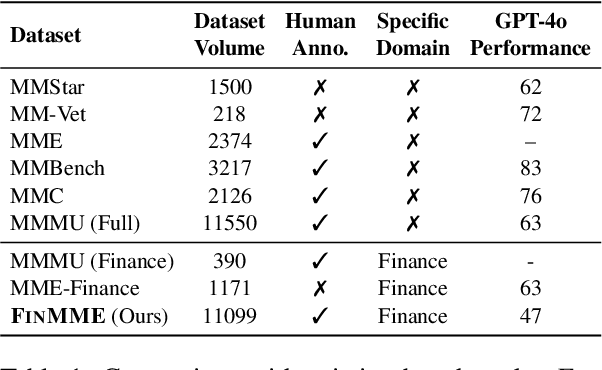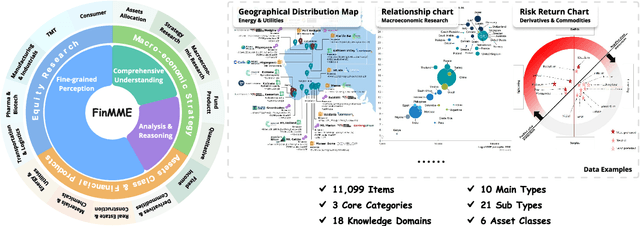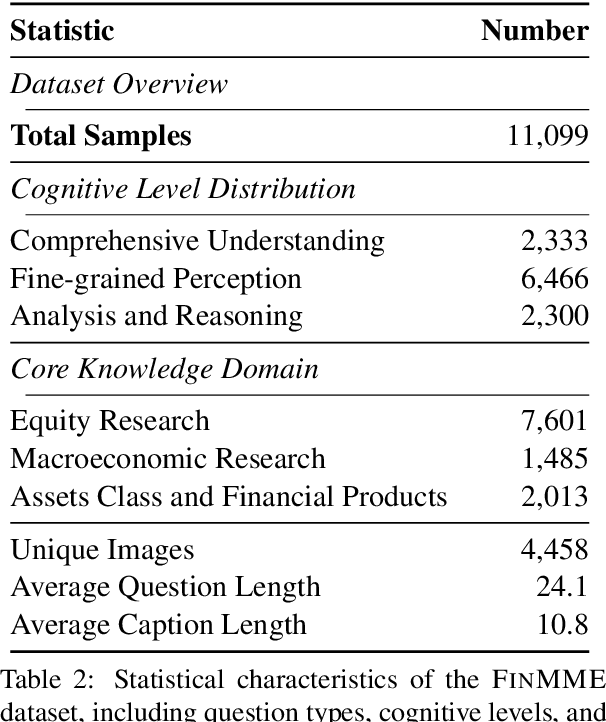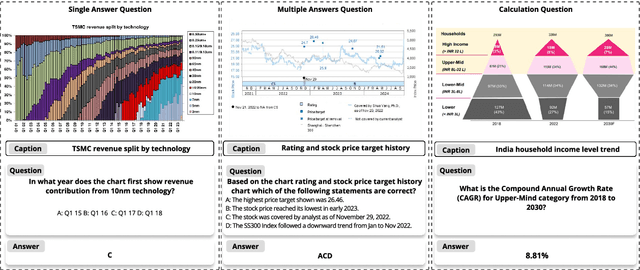Junyu Luo
Delay-Oriented Distributed Scheduling with TransGNN
Dec 09, 2025Abstract:Minimizing transmission delay in wireless multi-hop networks is a fundamental yet challenging task due to the complex coupling among interference, queue dynamics, and distributed control. Traditional scheduling algorithms, such as max-weight or queue-length-based policies, primarily aim to optimize throughput but often suffer from high latency, especially in heterogeneous or dynamically changing topologies. Recent learning-based approaches, particularly those employing Graph Neural Networks (GNNs), have shown promise in capturing spatial interference structures. However, conventional Graph Convolutional Networks (GCNs) remain limited by their local aggregation mechanism and their inability to model long-range dependencies within the conflict graph. To address these challenges, this paper proposes a delay-oriented distributed scheduling framework based on Transformer GNN. The proposed model employs an attention-based graph encoder to generate adaptive per-link utility scores that reflect both queue backlog and interference intensity. A Local Greedy Solver (LGS) then utilizes these utilities to construct a feasible independent set of links for transmission, ensuring distributed and conflict-free scheduling.
A Survey on Efficient Large Language Model Training: From Data-centric Perspectives
Oct 29, 2025Abstract:Post-training of Large Language Models (LLMs) is crucial for unlocking their task generalization potential and domain-specific capabilities. However, the current LLM post-training paradigm faces significant data challenges, including the high costs of manual annotation and diminishing marginal returns on data scales. Therefore, achieving data-efficient post-training has become a key research question. In this paper, we present the first systematic survey of data-efficient LLM post-training from a data-centric perspective. We propose a taxonomy of data-efficient LLM post-training methods, covering data selection, data quality enhancement, synthetic data generation, data distillation and compression, and self-evolving data ecosystems. We summarize representative approaches in each category and outline future research directions. By examining the challenges in data-efficient LLM post-training, we highlight open problems and propose potential research avenues. We hope our work inspires further exploration into maximizing the potential of data utilization in large-scale model training. Paper List: https://github.com/luo-junyu/Awesome-Data-Efficient-LLM
Sparse Causal Discovery with Generative Intervention for Unsupervised Graph Domain Adaptation
Jul 10, 2025Abstract:Unsupervised Graph Domain Adaptation (UGDA) leverages labeled source domain graphs to achieve effective performance in unlabeled target domains despite distribution shifts. However, existing methods often yield suboptimal results due to the entanglement of causal-spurious features and the failure of global alignment strategies. We propose SLOGAN (Sparse Causal Discovery with Generative Intervention), a novel approach that achieves stable graph representation transfer through sparse causal modeling and dynamic intervention mechanisms. Specifically, SLOGAN first constructs a sparse causal graph structure, leveraging mutual information bottleneck constraints to disentangle sparse, stable causal features while compressing domain-dependent spurious correlations through variational inference. To address residual spurious correlations, we innovatively design a generative intervention mechanism that breaks local spurious couplings through cross-domain feature recombination while maintaining causal feature semantic consistency via covariance constraints. Furthermore, to mitigate error accumulation in target domain pseudo-labels, we introduce a category-adaptive dynamic calibration strategy, ensuring stable discriminative learning. Extensive experiments on multiple real-world datasets demonstrate that SLOGAN significantly outperforms existing baselines.
From Web Search towards Agentic Deep Research: Incentivizing Search with Reasoning Agents
Jun 23, 2025Abstract:Information retrieval is a cornerstone of modern knowledge acquisition, enabling billions of queries each day across diverse domains. However, traditional keyword-based search engines are increasingly inadequate for handling complex, multi-step information needs. Our position is that Large Language Models (LLMs), endowed with reasoning and agentic capabilities, are ushering in a new paradigm termed Agentic Deep Research. These systems transcend conventional information search techniques by tightly integrating autonomous reasoning, iterative retrieval, and information synthesis into a dynamic feedback loop. We trace the evolution from static web search to interactive, agent-based systems that plan, explore, and learn. We also introduce a test-time scaling law to formalize the impact of computational depth on reasoning and search. Supported by benchmark results and the rise of open-source implementations, we demonstrate that Agentic Deep Research not only significantly outperforms existing approaches, but is also poised to become the dominant paradigm for future information seeking. All the related resources, including industry products, research papers, benchmark datasets, and open-source implementations, are collected for the community in https://github.com/DavidZWZ/Awesome-Deep-Research.
A Survey of Automatic Evaluation Methods on Text, Visual and Speech Generations
Jun 06, 2025Abstract:Recent advances in deep learning have significantly enhanced generative AI capabilities across text, images, and audio. However, automatically evaluating the quality of these generated outputs presents ongoing challenges. Although numerous automatic evaluation methods exist, current research lacks a systematic framework that comprehensively organizes these methods across text, visual, and audio modalities. To address this issue, we present a comprehensive review and a unified taxonomy of automatic evaluation methods for generated content across all three modalities; We identify five fundamental paradigms that characterize existing evaluation approaches across these domains. Our analysis begins by examining evaluation methods for text generation, where techniques are most mature. We then extend this framework to image and audio generation, demonstrating its broad applicability. Finally, we discuss promising directions for future research in cross-modal evaluation methodologies.
FinMME: Benchmark Dataset for Financial Multi-Modal Reasoning Evaluation
May 30, 2025



Abstract:Multimodal Large Language Models (MLLMs) have experienced rapid development in recent years. However, in the financial domain, there is a notable lack of effective and specialized multimodal evaluation datasets. To advance the development of MLLMs in the finance domain, we introduce FinMME, encompassing more than 11,000 high-quality financial research samples across 18 financial domains and 6 asset classes, featuring 10 major chart types and 21 subtypes. We ensure data quality through 20 annotators and carefully designed validation mechanisms. Additionally, we develop FinScore, an evaluation system incorporating hallucination penalties and multi-dimensional capability assessment to provide an unbiased evaluation. Extensive experimental results demonstrate that even state-of-the-art models like GPT-4o exhibit unsatisfactory performance on FinMME, highlighting its challenging nature. The benchmark exhibits high robustness with prediction variations under different prompts remaining below 1%, demonstrating superior reliability compared to existing datasets. Our dataset and evaluation protocol are available at https://huggingface.co/datasets/luojunyu/FinMME and https://github.com/luo-junyu/FinMME.
Cross-Domain Diffusion with Progressive Alignment for Efficient Adaptive Retrieval
May 20, 2025Abstract:Unsupervised efficient domain adaptive retrieval aims to transfer knowledge from a labeled source domain to an unlabeled target domain, while maintaining low storage cost and high retrieval efficiency. However, existing methods typically fail to address potential noise in the target domain, and directly align high-level features across domains, thus resulting in suboptimal retrieval performance. To address these challenges, we propose a novel Cross-Domain Diffusion with Progressive Alignment method (COUPLE). This approach revisits unsupervised efficient domain adaptive retrieval from a graph diffusion perspective, simulating cross-domain adaptation dynamics to achieve a stable target domain adaptation process. First, we construct a cross-domain relationship graph and leverage noise-robust graph flow diffusion to simulate the transfer dynamics from the source domain to the target domain, identifying lower noise clusters. We then leverage the graph diffusion results for discriminative hash code learning, effectively learning from the target domain while reducing the negative impact of noise. Furthermore, we employ a hierarchical Mixup operation for progressive domain alignment, which is performed along the cross-domain random walk paths. Utilizing target domain discriminative hash learning and progressive domain alignment, COUPLE enables effective domain adaptive hash learning. Extensive experiments demonstrate COUPLE's effectiveness on competitive benchmarks.
* IEEE TIP
MASS: Multi-Agent Simulation Scaling for Portfolio Construction
May 15, 2025Abstract:LLM-based multi-agent has gained significant attention for their potential in simulation and enhancing performance. However, existing works are limited to pure simulations or are constrained by predefined workflows, restricting their applicability and effectiveness. In this paper, we introduce the Multi-Agent Scaling Simulation (MASS) for portfolio construction. MASS achieves stable and continuous excess returns by progressively increasing the number of agents for large-scale simulations to gain a superior understanding of the market and optimizing agent distribution end-to-end through a reverse optimization process, rather than relying on a fixed workflow. We demonstrate its superiority through performance experiments, ablation studies, backtesting experiments, experiments on updated data and stock pools, scaling experiments, parameter sensitivity experiments, and visualization experiments, conducted in comparison with 6 state-of-the-art baselines on 3 challenging A-share stock pools. We expect the paradigm established by MASS to expand to other tasks with similar characteristics. The implementation of MASS has been open-sourced at https://github.com/gta0804/MASS.
Large Language Model Agent: A Survey on Methodology, Applications and Challenges
Mar 27, 2025Abstract:The era of intelligent agents is upon us, driven by revolutionary advancements in large language models. Large Language Model (LLM) agents, with goal-driven behaviors and dynamic adaptation capabilities, potentially represent a critical pathway toward artificial general intelligence. This survey systematically deconstructs LLM agent systems through a methodology-centered taxonomy, linking architectural foundations, collaboration mechanisms, and evolutionary pathways. We unify fragmented research threads by revealing fundamental connections between agent design principles and their emergent behaviors in complex environments. Our work provides a unified architectural perspective, examining how agents are constructed, how they collaborate, and how they evolve over time, while also addressing evaluation methodologies, tool applications, practical challenges, and diverse application domains. By surveying the latest developments in this rapidly evolving field, we offer researchers a structured taxonomy for understanding LLM agents and identify promising directions for future research. The collection is available at https://github.com/luo-junyu/Awesome-Agent-Papers.
Attention Bootstrapping for Multi-Modal Test-Time Adaptation
Mar 04, 2025Abstract:Test-time adaptation aims to adapt a well-trained model to potential distribution shifts at test time using only unlabeled test data, without access to the original training data. While previous efforts mainly focus on a single modality, test-time distribution shift in the multi-modal setting is more complex and calls for new solutions. This paper tackles the problem of multi-modal test-time adaptation by proposing a novel method named Attention Bootstrapping with Principal Entropy Minimization (ABPEM). We observe that test-time distribution shift causes misalignment across modalities, leading to a large gap between intra-modality discrepancies (measured by self-attention) and inter-modality discrepancies (measured by cross-attention). We name this the attention gap. This attention gap widens with more severe distribution shifts, hindering effective modality fusion. To mitigate this attention gap and encourage better modality fusion, we propose attention bootstrapping that promotes cross-attention with the guidance of self-attention. Moreover, to reduce the gradient noise in the commonly-used entropy minimization, we adopt principal entropy minimization, a refinement of entropy minimization that reduces gradient noise by focusing on the principal parts of entropy, excluding less reliable gradient information. Extensive experiments on the benchmarks validate the effectiveness of the proposed ABPEM in comparison with competing baselines.
 Add to Chrome
Add to Chrome Add to Firefox
Add to Firefox Add to Edge
Add to Edge